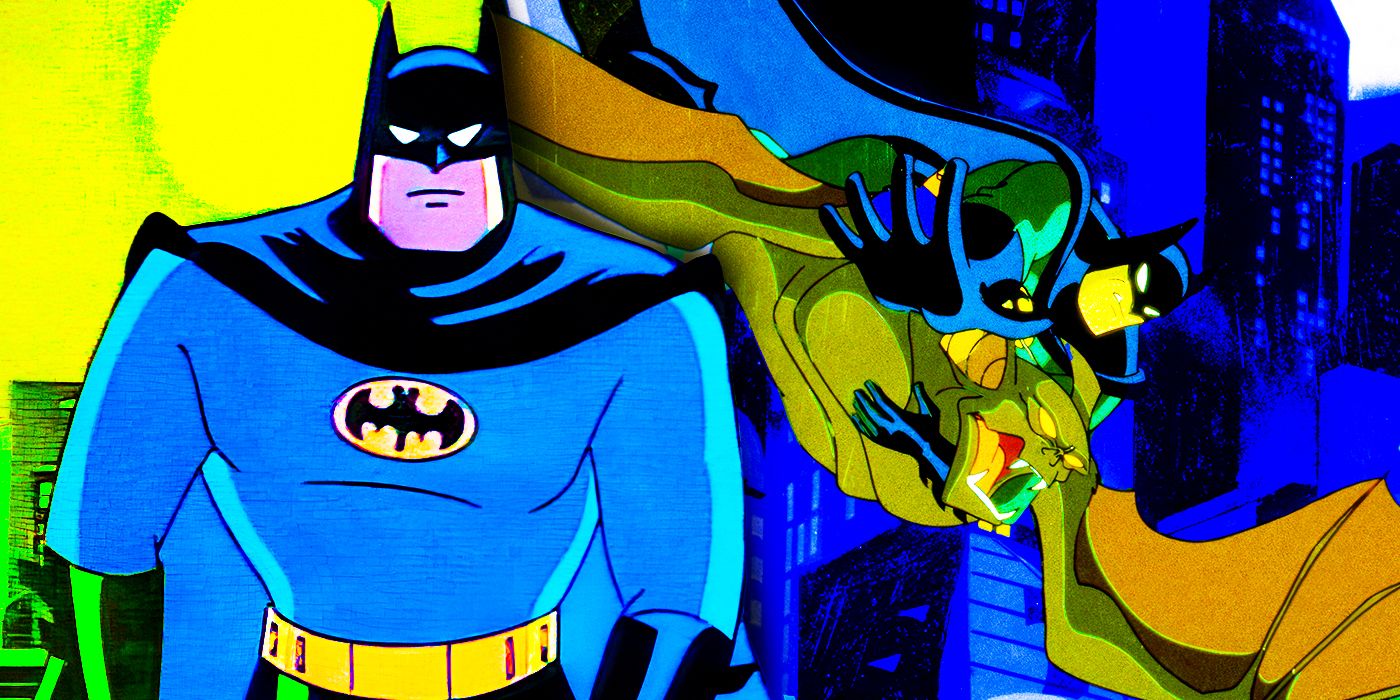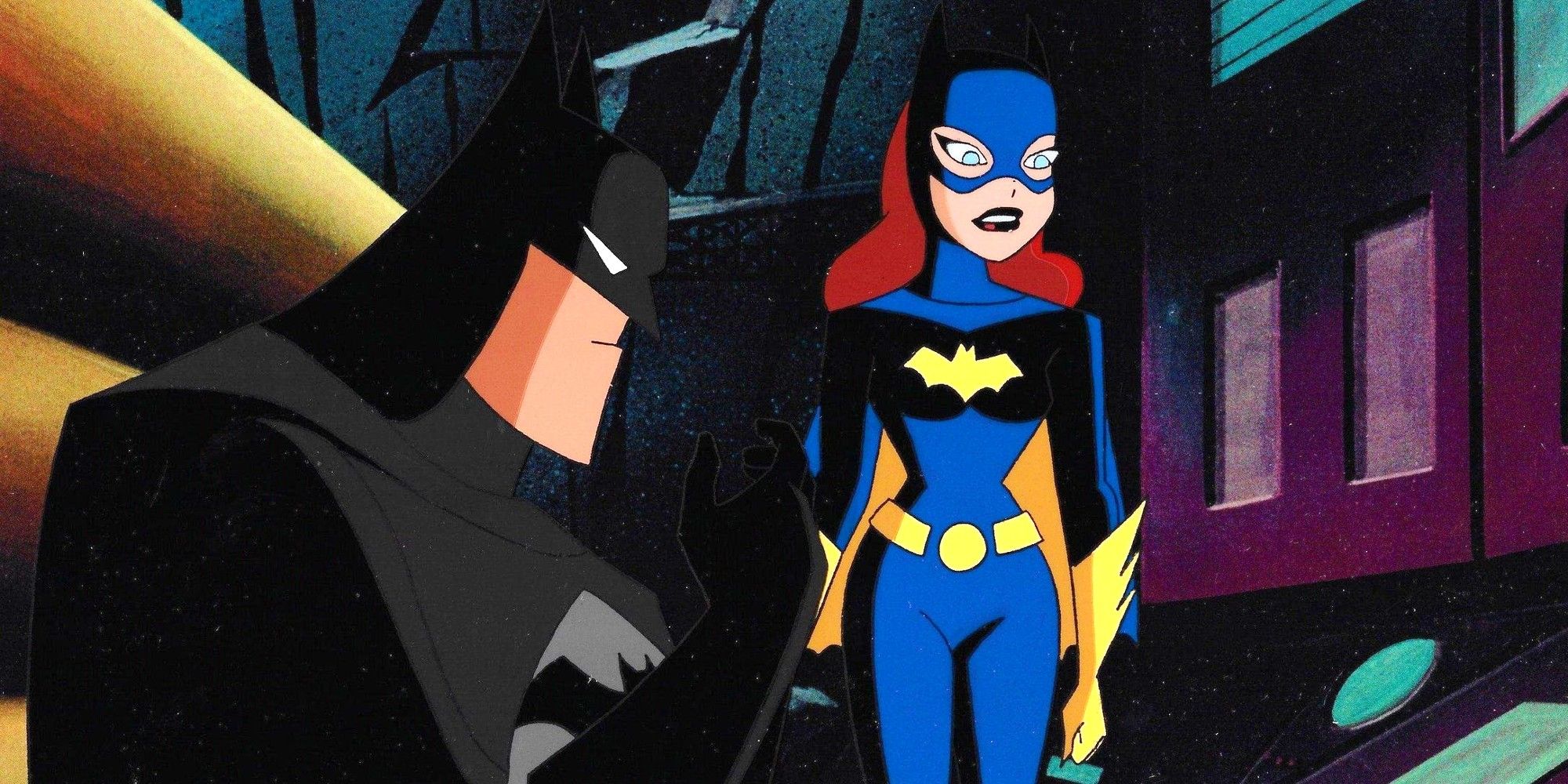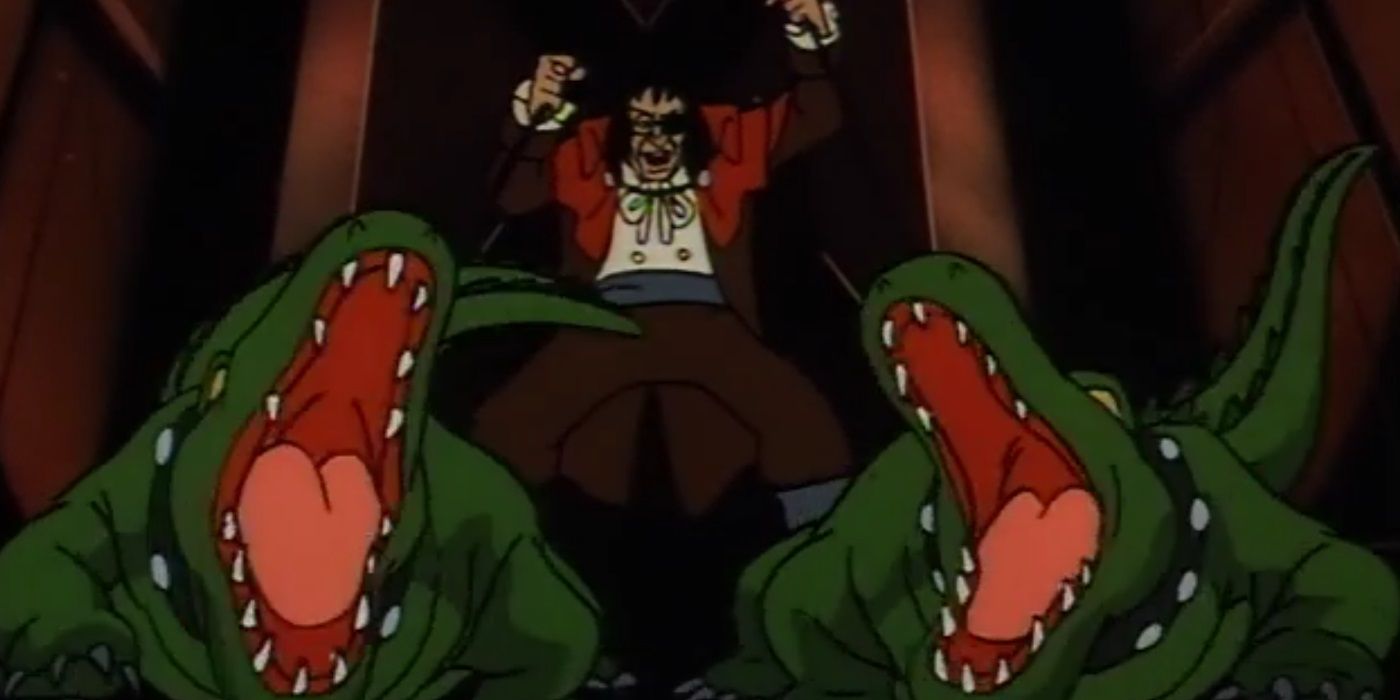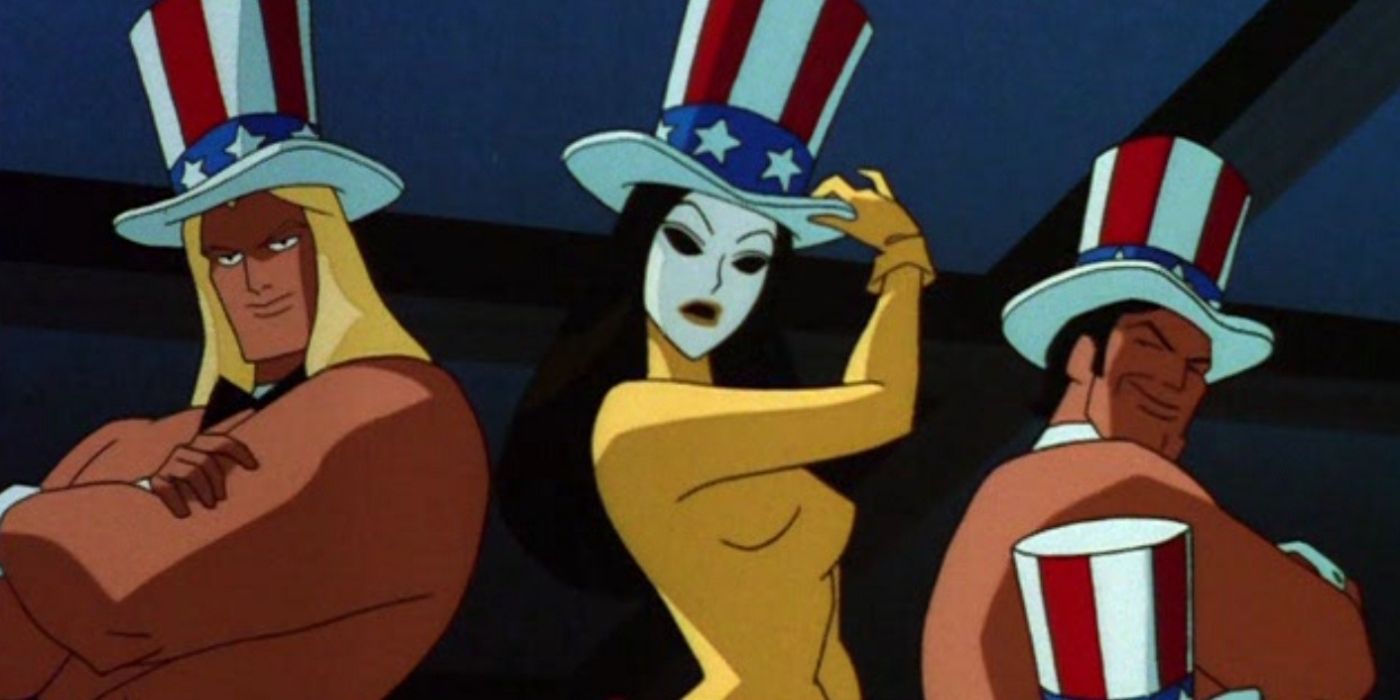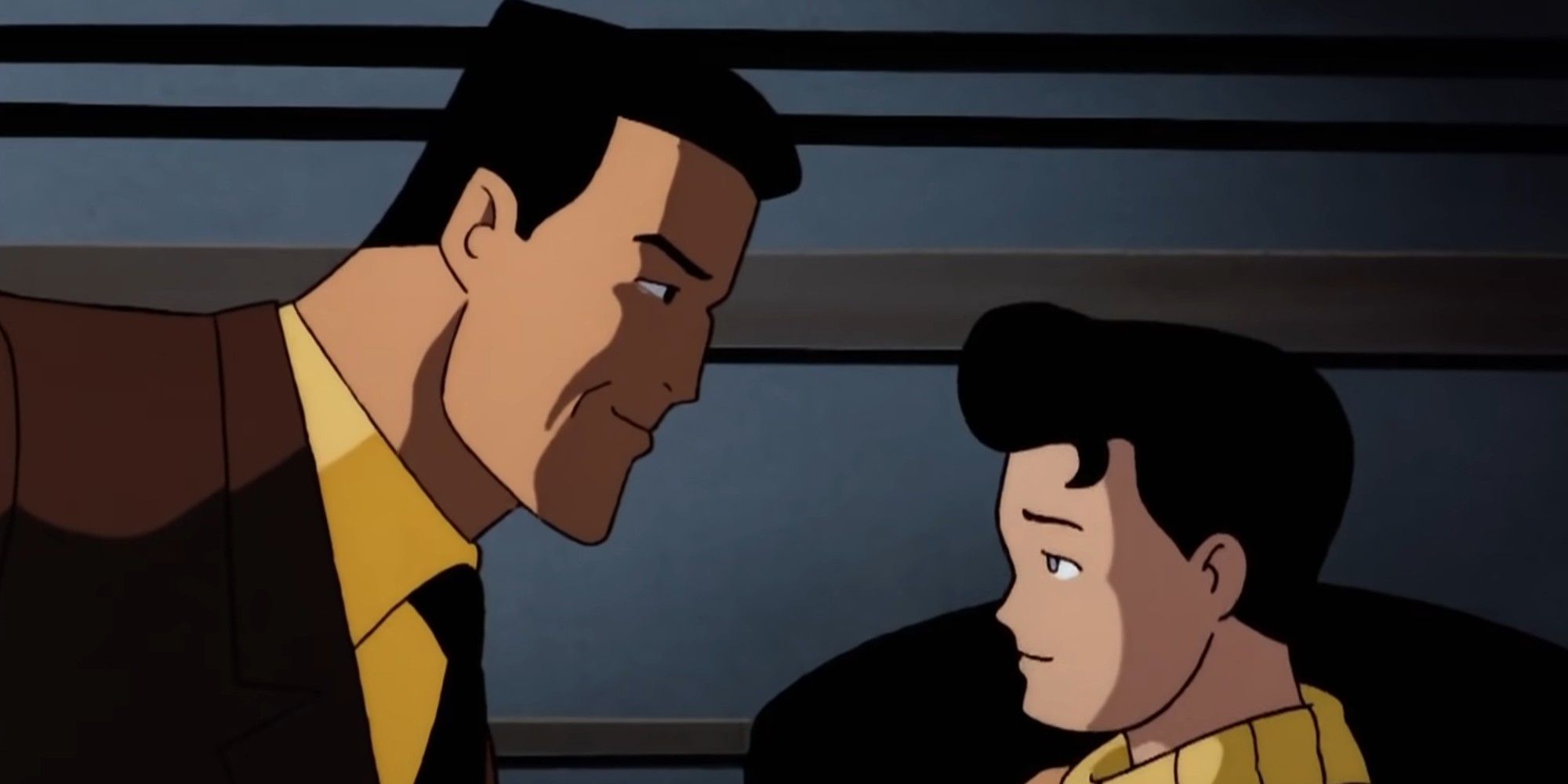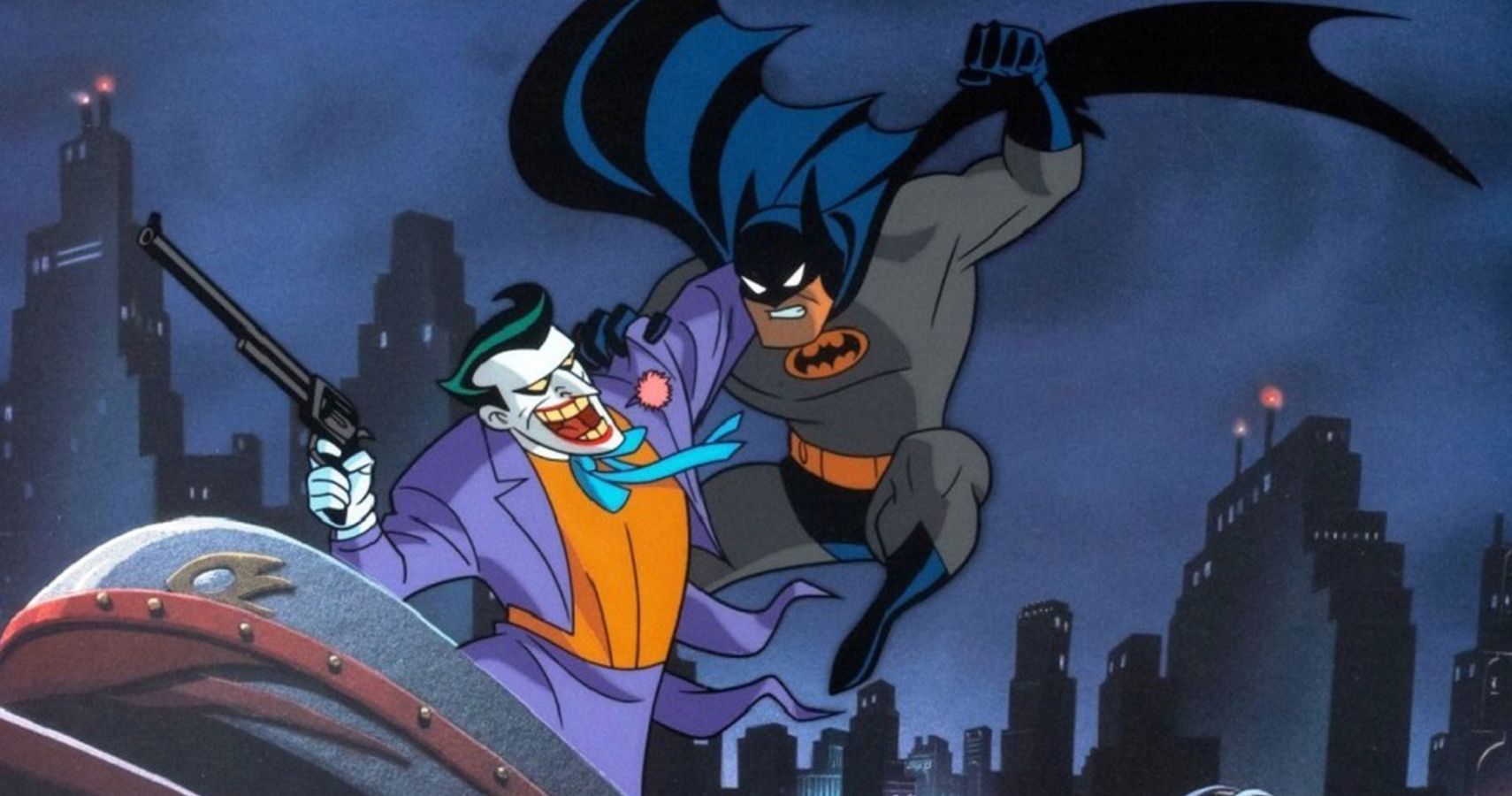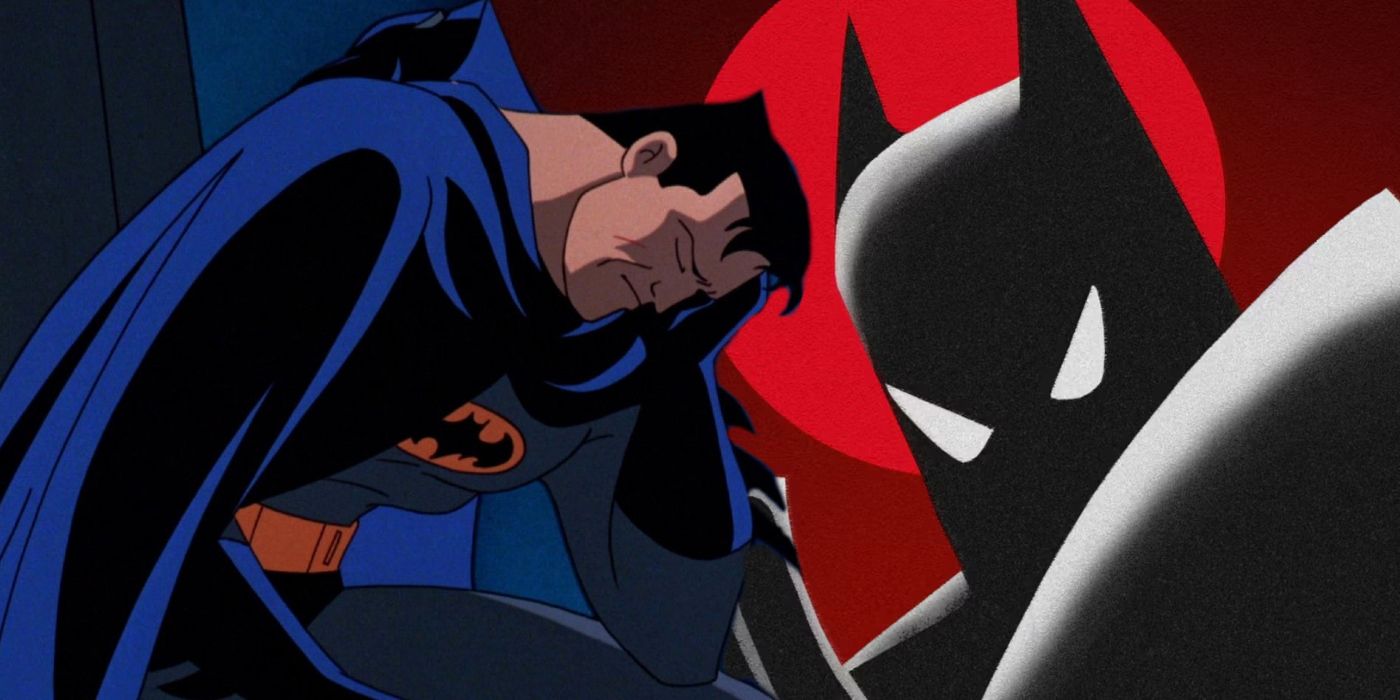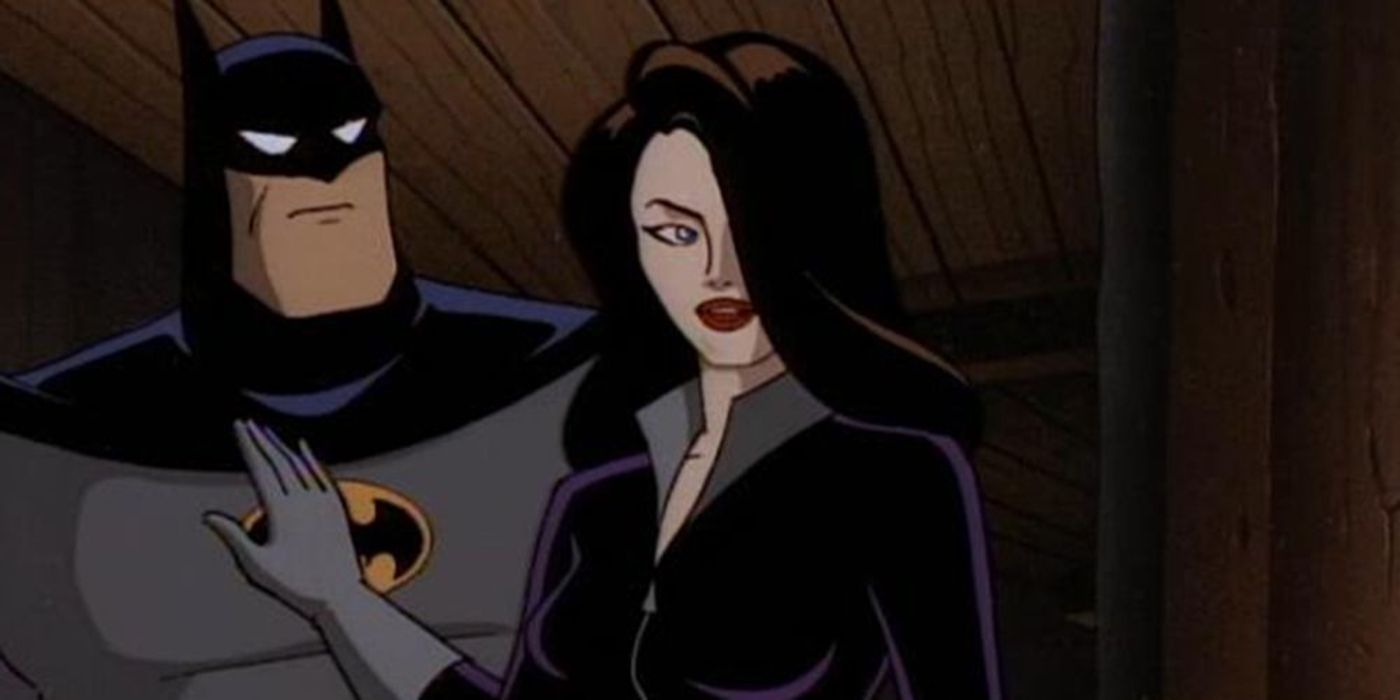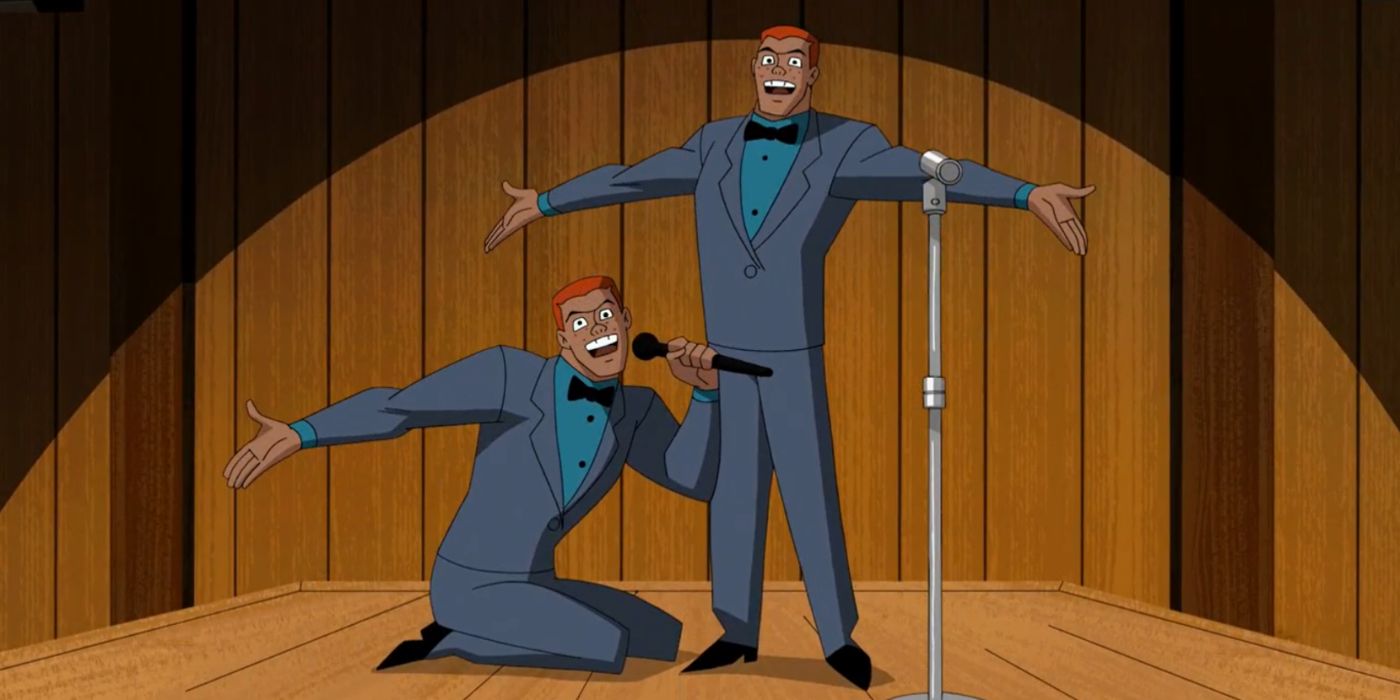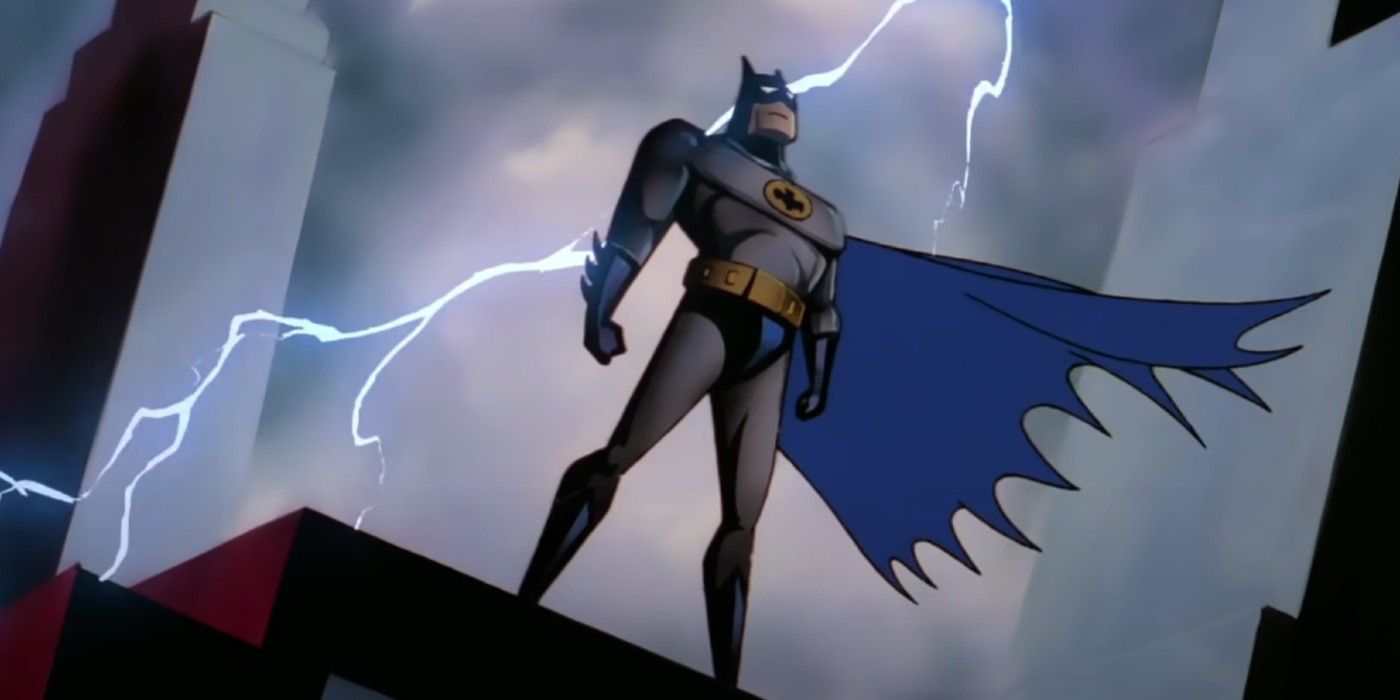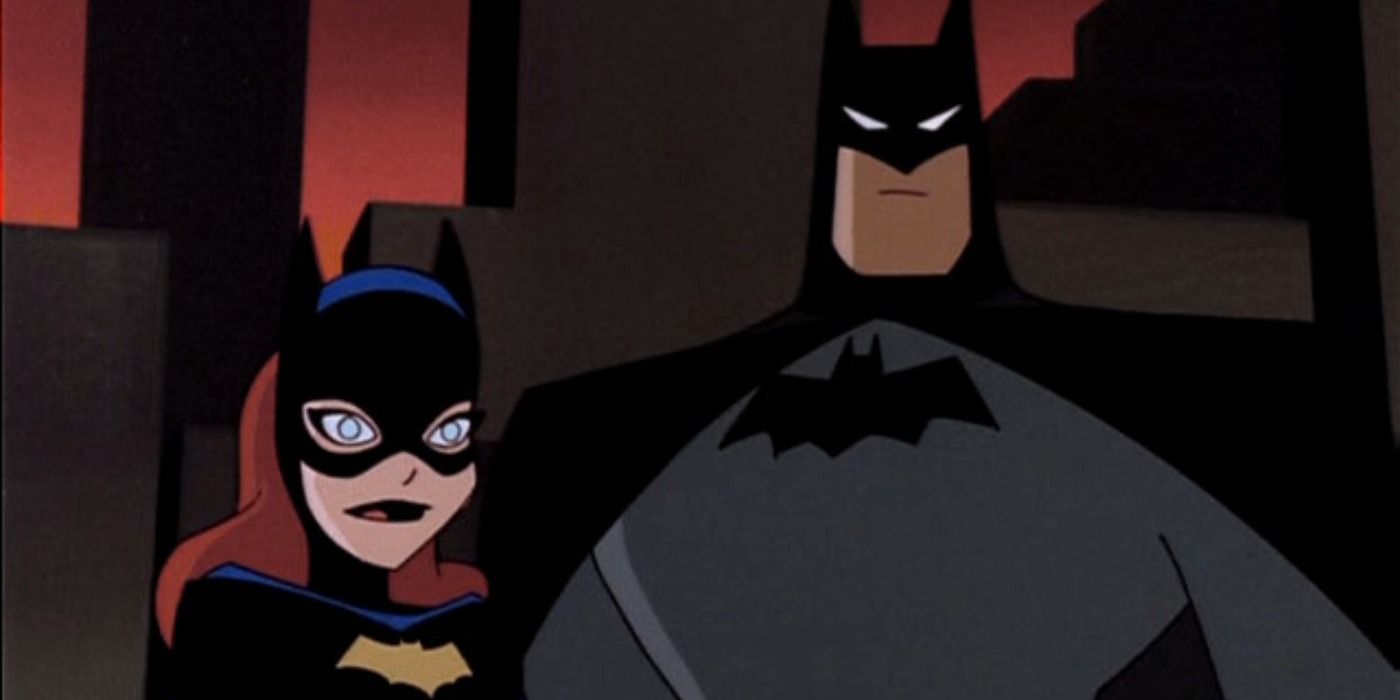Summary
- Batman: The Animated Series, while beloved by fans, has flaws that have become more evident over time, such as the outdated 4:3 aspect ratio and some weak episodes.
- Some character designs and outfits in the series have not aged well, with certain costumes appearing dated and out of place in a contemporary context.
- The series missed an opportunity by not including Jason Todd, the most infamous Robin, and instead focused on the less compelling Tim Drake. This was a missed chance for a darker storyline in line with the show's tone.
Batman: The Animated Series is widely revered as not only the best animated Batman show, but one of the greatest stories featuring the character of all time. Borrowing a gothic style from Tim Burton's 1989 classic Batman, the DC series captured what many fans consider to be the definitive version of Bruce Wayne and his adventures. Not only a representation of Batman stories, Batman: The Animated Series also established its own stories that have gone on to reoccur in many versions of Gotham, most notably the creation of Harley Quinn and the exploration of Mr. Freeze's tragic backstory.
For as much as the series did right, it was not without faults. Originally airing in 1992, Batman: The Animated Series holds a fond place of nostalgia in the hearts of many Batman fans. However, with over 25 years having passed since the show's first debuted, time has not been totally kind to the beloved series. A fresh re-watch with modern eyes and the power of hindsight uncovers some hard-to-ignore flaws in the seemingly perfect representation of Batman.
10 The Aspect Ratio Has Aged It Badly
Originally aired for televisions of the mid-'90s, Batman: The Animated Series employed a standard, 4:3 aspect ratio that filled the frames of televisions at the time. Wider screens were much less common, meaning it wouldn't behoove the series try anything out of the norm, even if they had the budget or ability to do so. As technology steadily improved over the years, the prevalent aspect ratio for TV content has changed to 16:9, with high-definition and widescreen device being cheaper than ever before.
For as good as the series is, the reality remains that Batman: The Animated Series was a product of its time. Watching today, viewers must pick their poison between a stretched-out image or distracting black bars. Though the beautiful art style of the animation has remained timeless, the original presentation of it has since been outgrown by modern technology.
9 There Were Genuinely Bad Episodes
Despite ostensibly being a children's cartoon, Batman: The Animated Series wasn't afraid to tell truly compelling stories, captivating audiences far beyond what was expected of them. There are so many standout episodes of Batman: The Animated Series that it's hard to pick a favorite, the best the show has to offer still holding its own narratively after 28 years. However, not every episode could be so incredible, and a handful of the plots Warner Bros. Animation crafted were straight-up duds.
It's hard to blame any show for having bad episodes, especially after going for 85 episodes like Batman: The Animated Series did. For every ground-breaking installment like "Almost Got 'im" and "Over The Edge", there was a terrible episode like "Underdwellers" and "Forgotten". Showrunner Bruce Timm has even admitted to the lackluster final product of some of these episodes on their official commentary, proving that on a re-watch, the animated series will miss as often as it hits a home run.
8 Some Of The Outfits Didn't Age Gracefully
One of the smartest decisions Batman: The Animated Series made was its timeless setting. Though technically set in the '90s, the art direction of the cars, buildings, and clothes of Gotham was a mix of the present and '50s retro-futurism, all painted with a healthy coat of Bruce Timm's trademark minimalism. This unique setting went a long way to helping the series age gracefully, but a few dated eyesores still slipped through the cracks.
At times, the character designs are far too rooted in the '90s, with outfits that might've seemed chic and timeless at the point of creation having aged like milk. One particularly bad offender is Alice, the blonde obsession of the deranged villain the Mad Hatter. Her bizarre combo of a baby blue blouse and brick red, oversize suit jacket was nearly a crime warranting Batman's attention, and she was far from the only offender of dated designs in the series.
7 The Series Missed An Opportunity By Not Including Jason Todd
Throughout the run of the original series, Dick Grayson was Batman's one and only Robin. True to his character in the comics, he eventually drifts away from Bruce Wayne's mentorship, becoming Nightwing in the spin-off show The New Batman Adventures. The mantle of Robin was then passed to Tim Drake in the universe, completely missing an opportunity to portray the most infamous Robin of them all.
Jason Todd is known for being killed by the Joker in the comics, eventually returning as the murderous anti-hero Red Hood. Considering the darker tone of Batman: The Animated Series and its spin-offs, the missed potential for this storyline is hard to ignore in the face of the childish jokester, Tim Drake. The series had even explored the possible death of Batman's sidekicks before with the fake out of Batgirl's death, meaning that such a plot was on the table for the cartoon. Though the animated series missed few opportunities, the death of Robin remains the most painful to-date.
6 Some Of The Fight Scenes Are Stiff By Today's Standards
For a cartoon with a considerable child audience, the show was able to get away with a surprising amount of violence. Batman: The Animated Series creatively evaded censorship, actions scenes sometimes being even enhanced by the extra creativity needed to get the dangerous scenes depicted to fly past the network. While the gorgeous art style lovingly portrayed exciting fight scenes, they weren't always the best in motion, particularly in the earlier seasons.
By today's standards, many of the fight scenes have aged somewhat poorly. Characters will grapple stiffly with one another for ages, punches will land on offscreen opponents with repetitive sound effects, and villains will stand awkwardly waiting for their opponent to make a move. The show was still able to squeeze some drama and stakes out of its violent encounters, but there's no denying that animation has come a long way since some of the clunky, cost-limited action scenes of the classic Batman series.
5 The Show's Understanding Of Mental Health Is Stuck In The Past
True to the comics, much of Batman's rogues gallery in his eponymous animated series frequently find themselves in Arkham Asylum, an emergency psychiatric treatment facility that's more of a prison than a rehabilitation center. Batman villains have received criticism in the past for their frequent misunderstanding and demonization of psychiatric ailments, and Batman: The Animated Series is certainly not without sin in perpetuating such negative stereotypes.
Many of Batman's nemeses in the show are mentally unwell, and sometimes even sympathetic, existing with real-world disorders that the show portrays as villainous traits. The likes of Two-Face and The Ventriloquist stand out as particularly bad examples of representations of mental illness, their Disassociative Identity Disorder being implied as the reason they commit crimes. The world's understanding of the human mind has come a long way since the airing of Batman: The Animated Series, exhibiting some questionable relics of past beliefs.
4 Talia al Ghul Spends Too Much Time As A Damsel In Distress
One of Batman's recurring love interests across multiple stories, Talia al Ghul is the daughter of supervillain Ra'as al Ghul. The strained relationship between her and Bruce is typical to many of the stories she's featured in, including Talia's appearance in The Dark Knight Rises. However, the Talia al Ghul of Batman: The Animated Series displays little of the cunning or intelligence usually attributed to the character, leaving her as more of a creature of emotion rather than the cold-blooded assassin of other Batman media.
In her featured two-part episode, Talia seems to have lost her edge, being kidnapped by her father as part of an elaborate test of Batman's worthiness. Later, she's nearly killed and has to be saved by Batman again, eventually using her father's fortune to buy a castle in Spain and lounge around pining for Bruce Wayne. This stunning removal of agency from a character that is usually considered one of DC's most dangerous assassins doesn't bode well for future viewings of Batman: The Animated Series.
3 The Show Is Undeniably Cheesy
Batman: The Animated Series is renowned for its dark tone, not shying away from frightening moments or tragedy. For all it's able to accomplish in this regard, the series is still undeniably cheesy. As an animated superhero show, even older audience can always accept at least some level of camp, but the less-celebrated moments of Batman: The Animated Series can be surprisingly corny on a second-glance.
Not all of Batman's villains in the show are as sympathetic as Mr. Freeze or as dangerous as the Joker. Perfecting his supernatural sense of timing, the first thing the Clock King does is put little clock faces on his glasses and pick a fight with Batman. The presentation of the show itself can also be just as cheesy as its characters, a werewolf Batman faces in another episode having his presence punctuated by a hilariously sincere guitar riff. Batman: The Animated Series can get pretty silly, but always takes itself somewhat seriously, to mixed results.
2 Batman Wasn't Always In The Right
Batman is known for having a strict moral code, being tough on crime but refusing to kill. This straightforward depiction of Batman's character is just one of things that the animated series has done better than Batman's movies. However, his black-and-white view of the world can sometimes rub even the viewer the wrong way, the series frequently depicting situations in which Batman's actions are clearly in the wrong.
In one of the series' better installments, Season 2, Episode 3's "Mudslide" depicts Clayface attempting to save himself from disintegrating, his mutated body failing him. After stealing a rare isotope from Wayne Biomedical Labs, Clayface is nearly able to restore himself to normal with the help of his scientist love interest. But before the procedure is complete, Batman coldly turns of the machine, dooming Clayface to certain death. This is just one example of Batman's actions in following a strict code of justice hurting other people, something that comes up more than a few times in the show.
1 The Series Sowed The Seeds For Batman's Most Uncomfortable Romance
Though Batman: The Animated Series implies Bruce pursues a relationship with Catwoman, who he actually winds up with in the canon of the show is an uncomfortable point of contention with fans. In 2016's The Killing Joke, produced by show runner Bruce Timm, Batman made the controversial decision to get involved with Batgirl romantically, a morally questionable inclusion that fans hated. But this wasn't Timm's first time forcing the pairing, as the trajectory of Batman and Batgirl's relationship was already headed in that direction by the end of the first series.
While Batman: The Animated Series spends a good deal of time shipping Barbara Gordon with Dick Grayson, as Robin drifts away from Batman, Barbara finds herself getting closer to him. In the film taking place soon after the series ends, Batman: The Mystery of Batwoman, Bruce finds himself flirting with a college-aged Barbara. In sequel comic Batman Beyond 2.0, it's confirmed that the two wound up together, even having kids. Though Batman doesn't begin his romance with Batgirl in the original run of Batman: The Animated Series, it clearly put plans in motion to ruin Bruce Wayne's more familial relationship with Barbara for the sake of a taboo romance.

